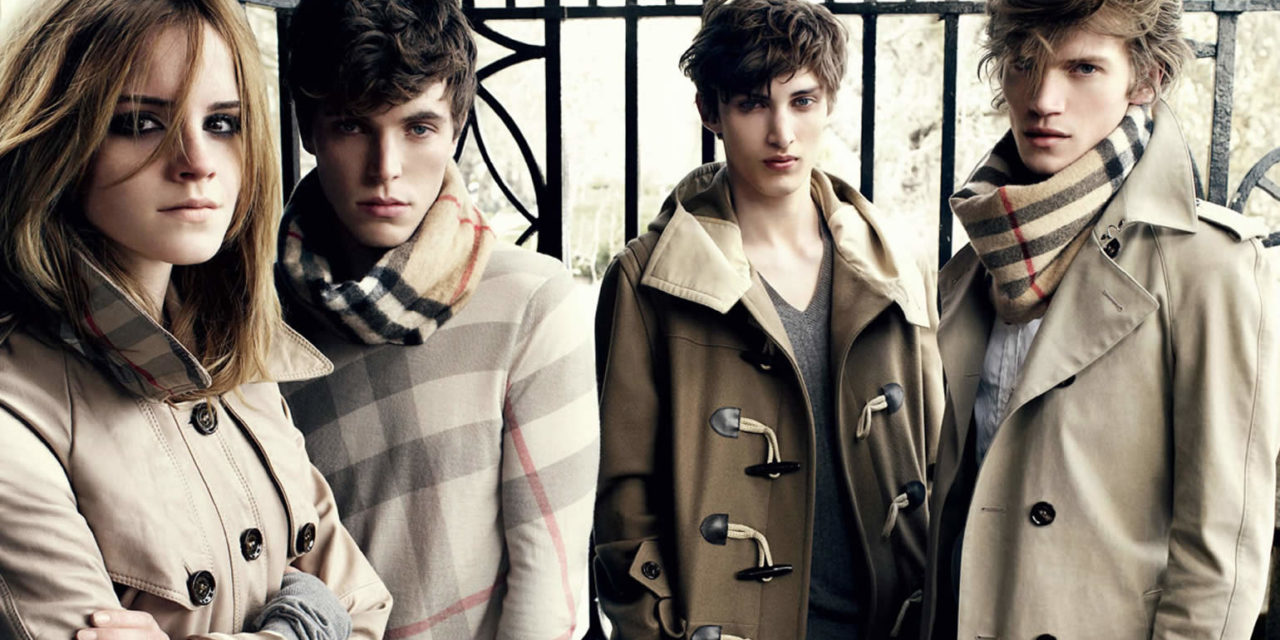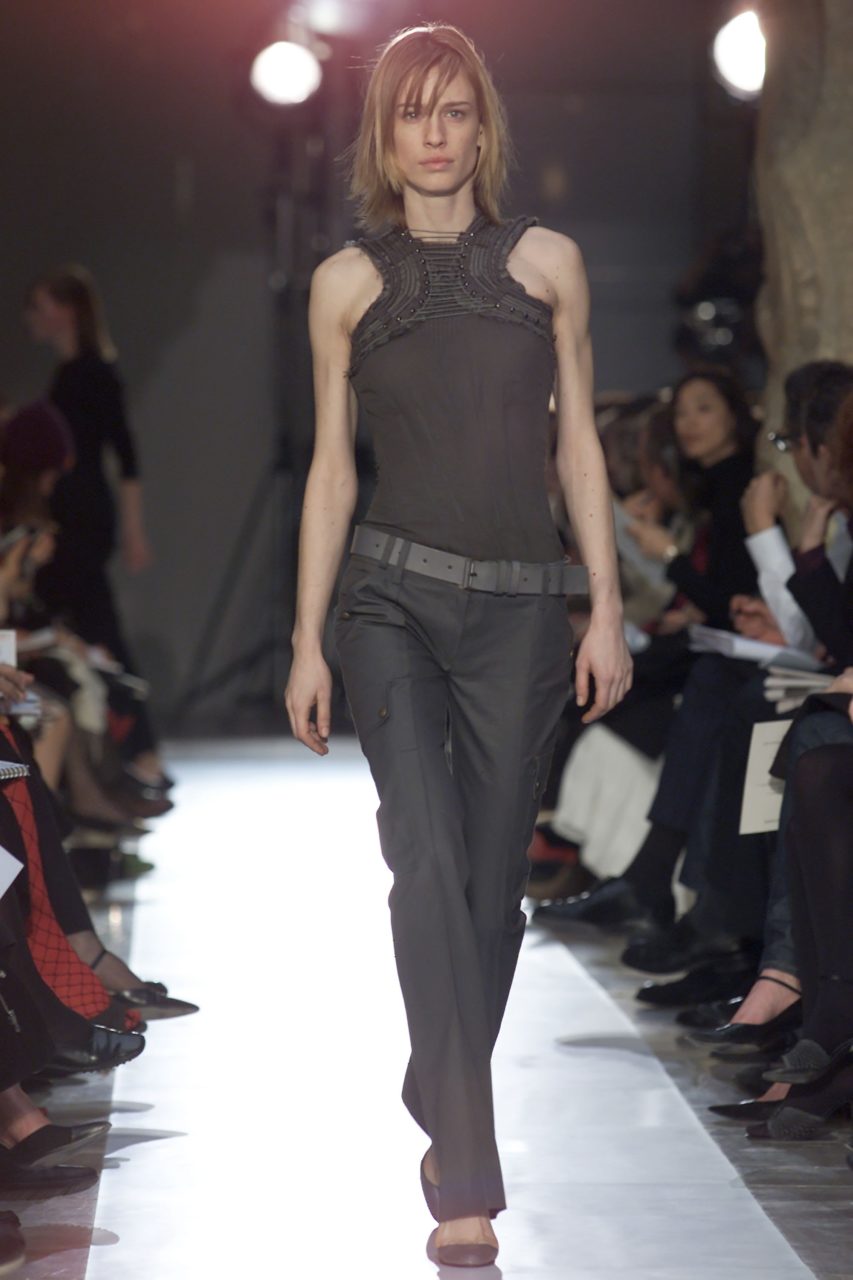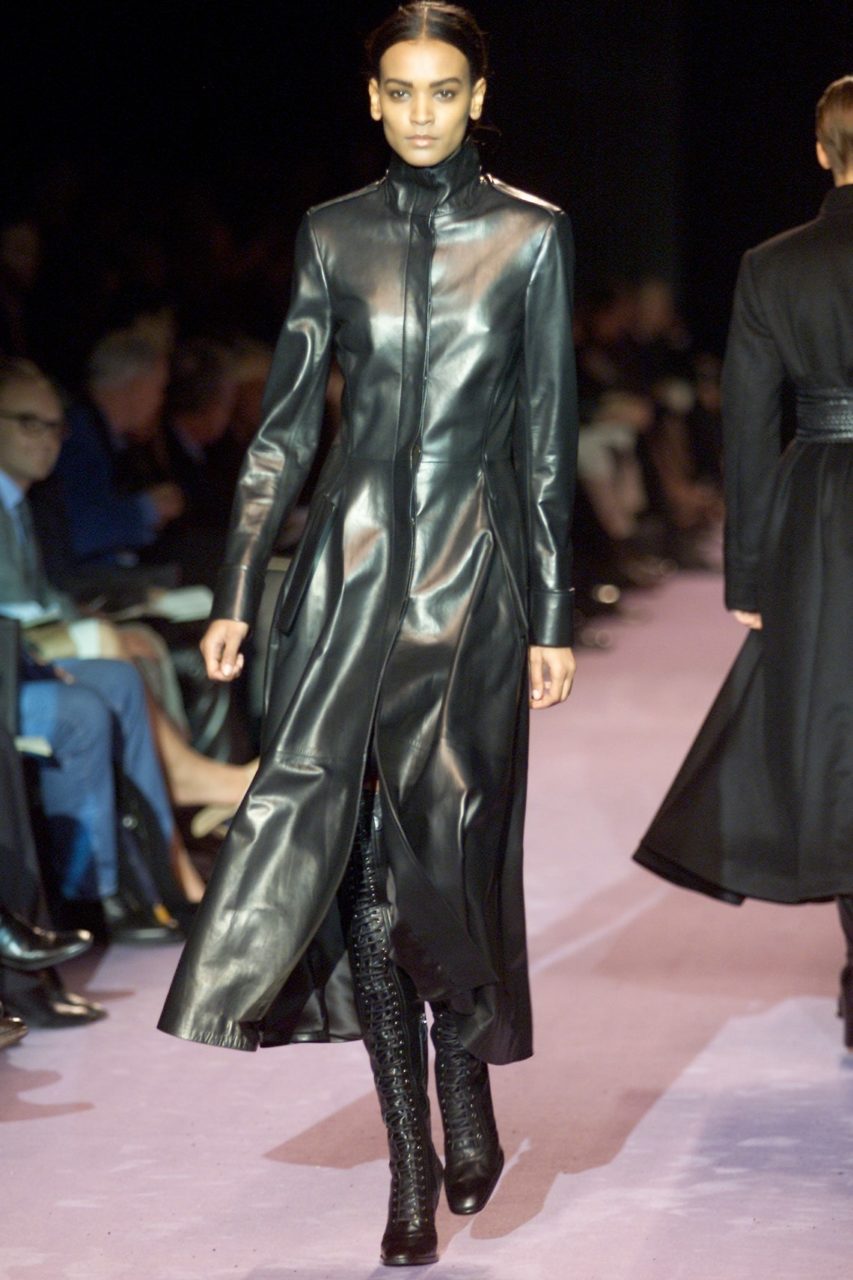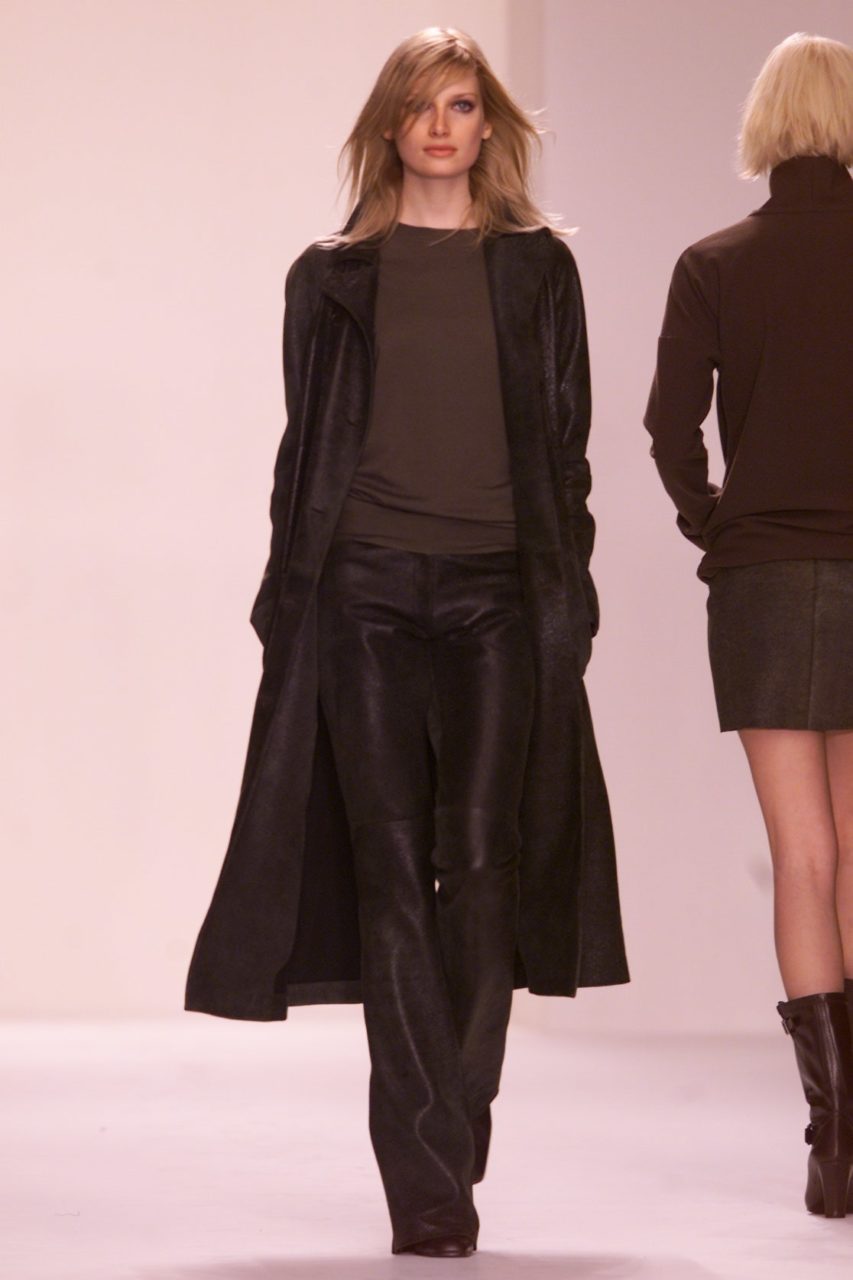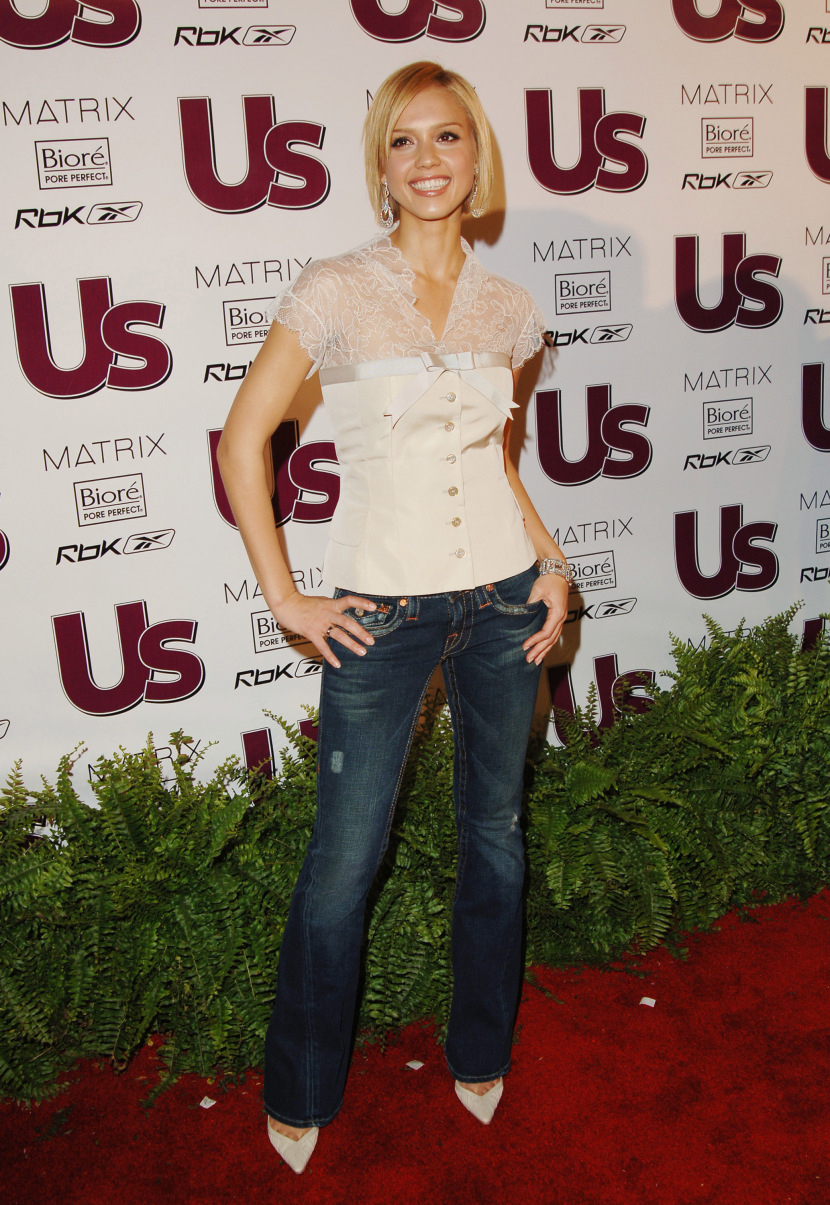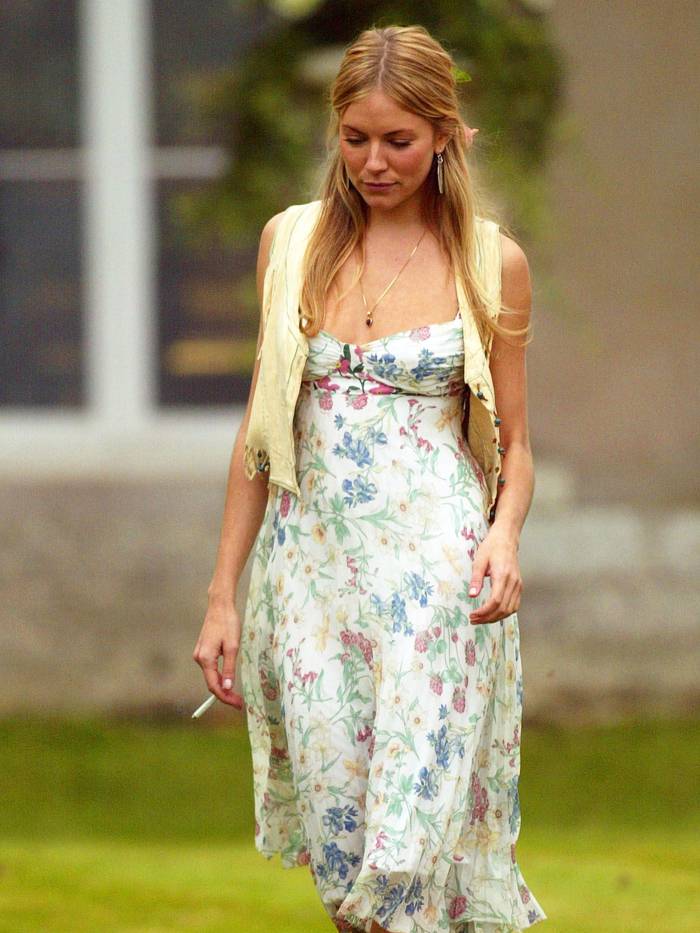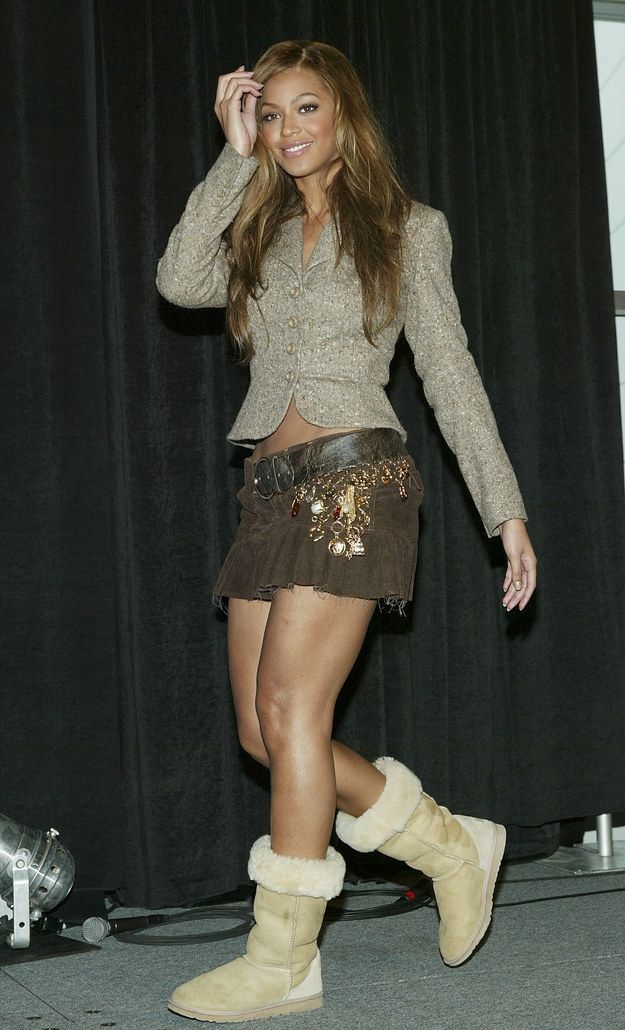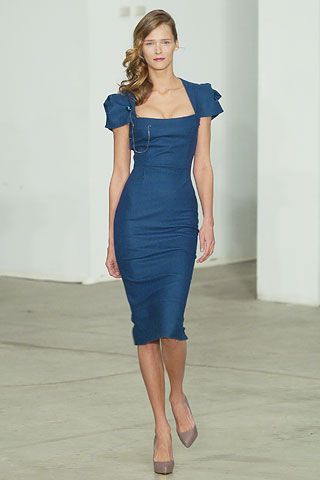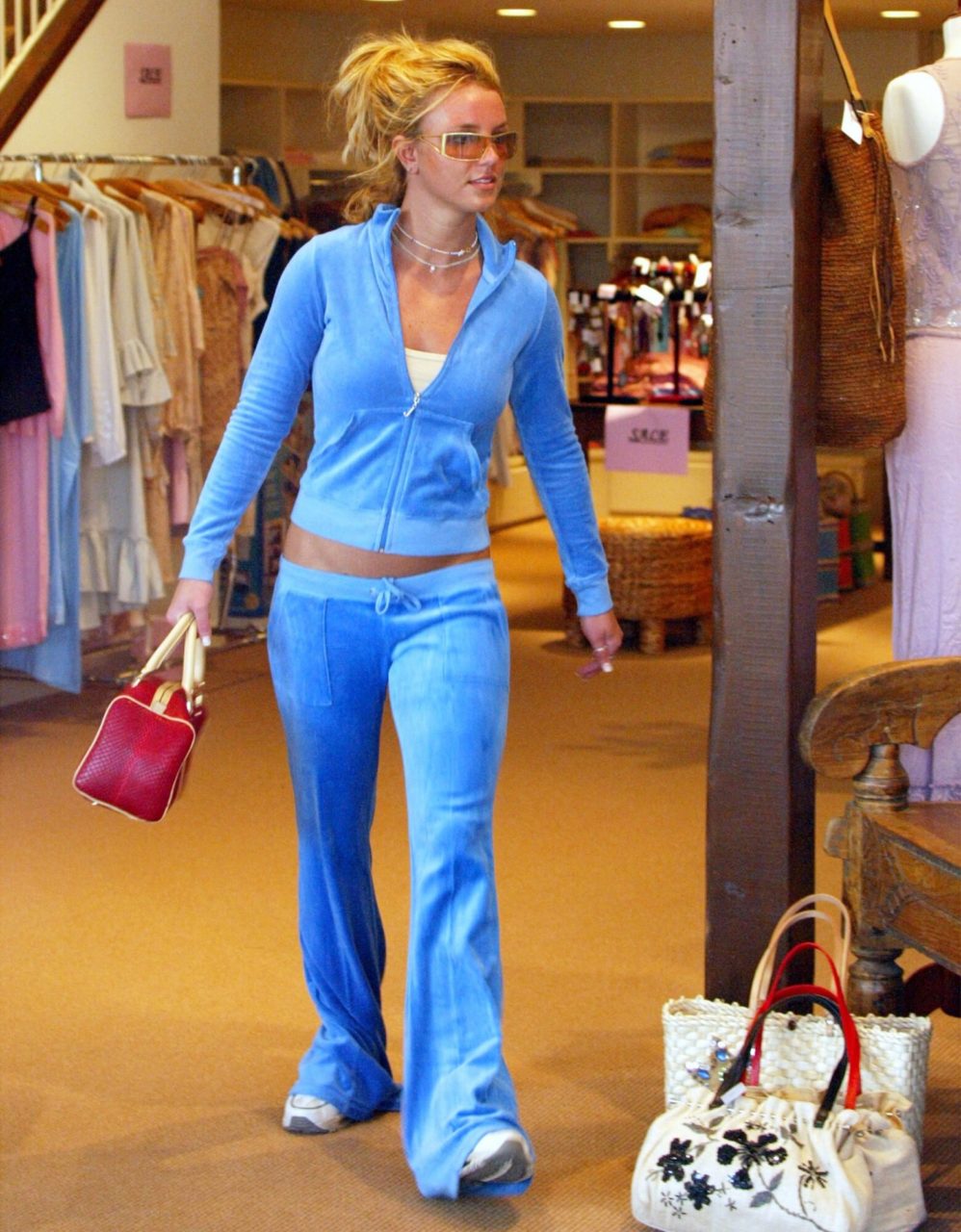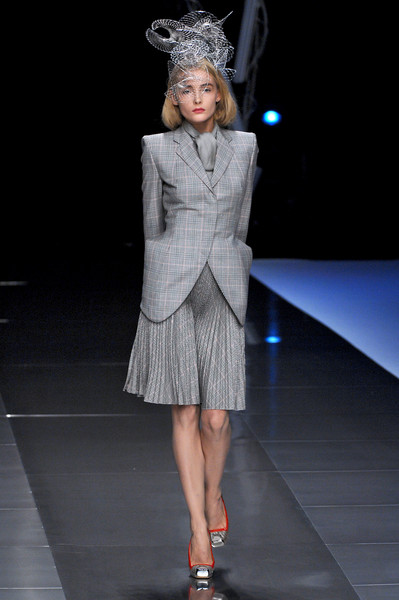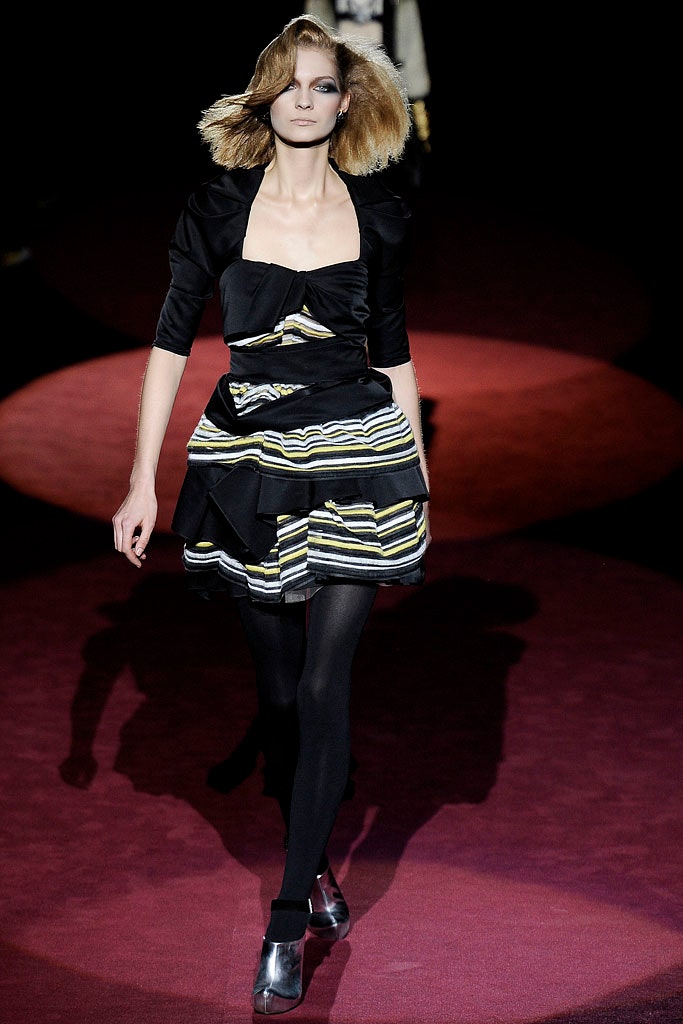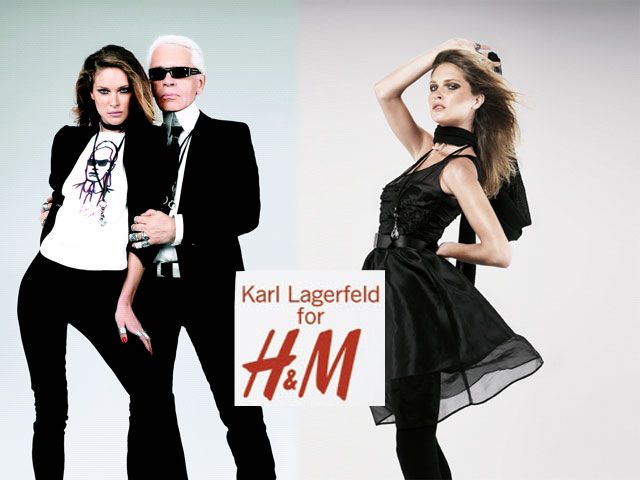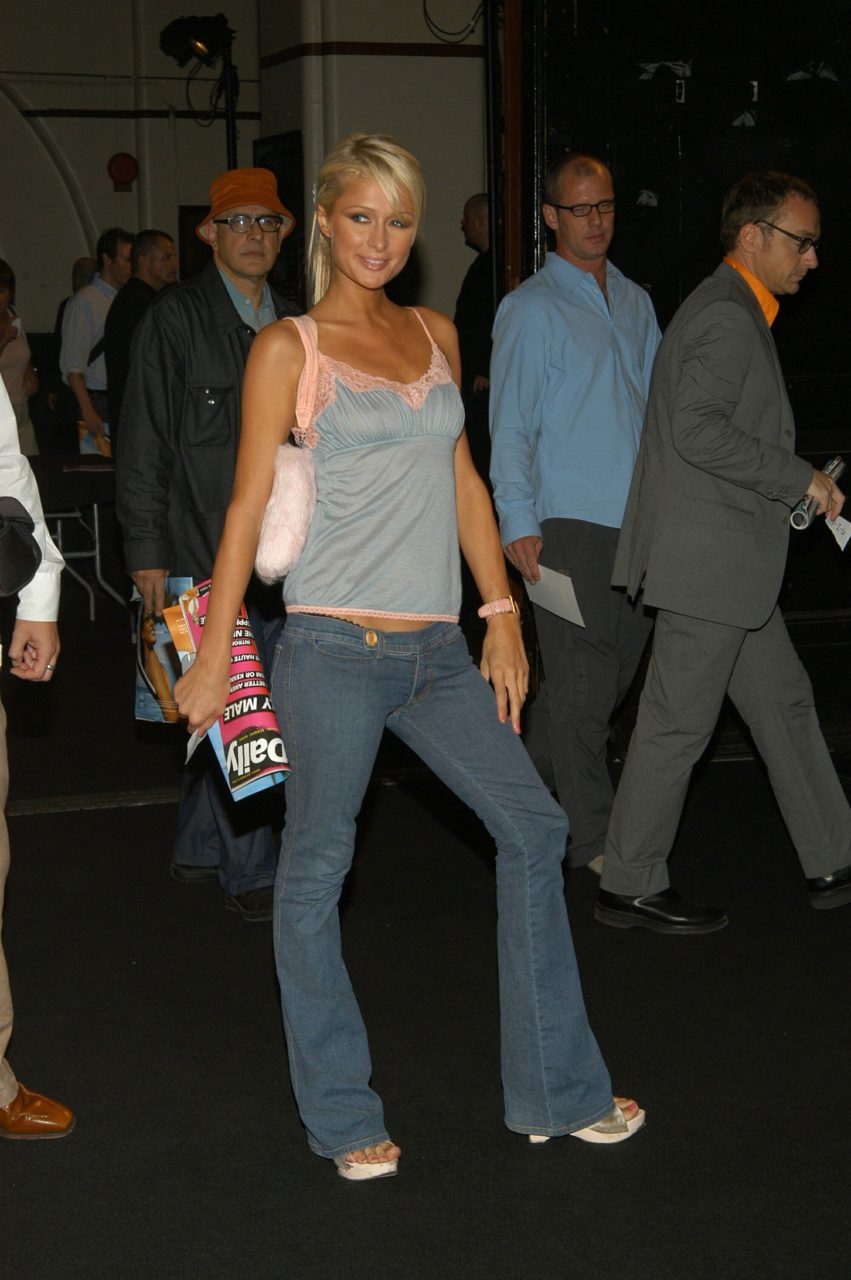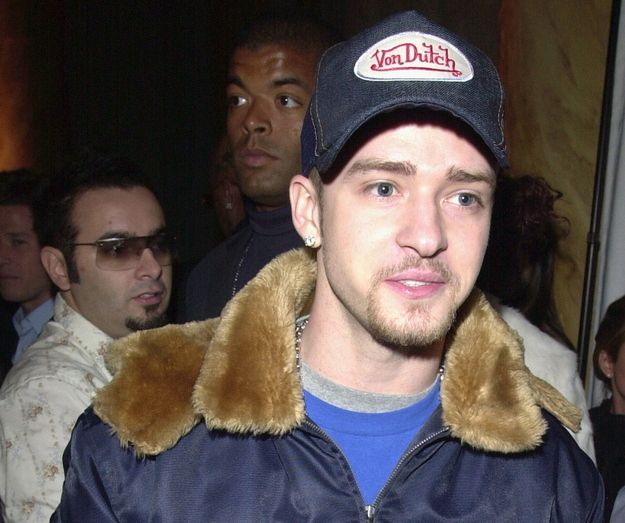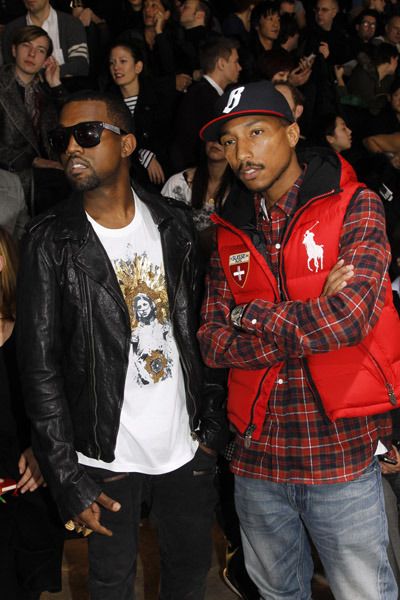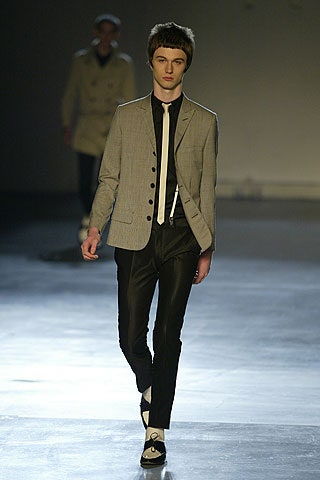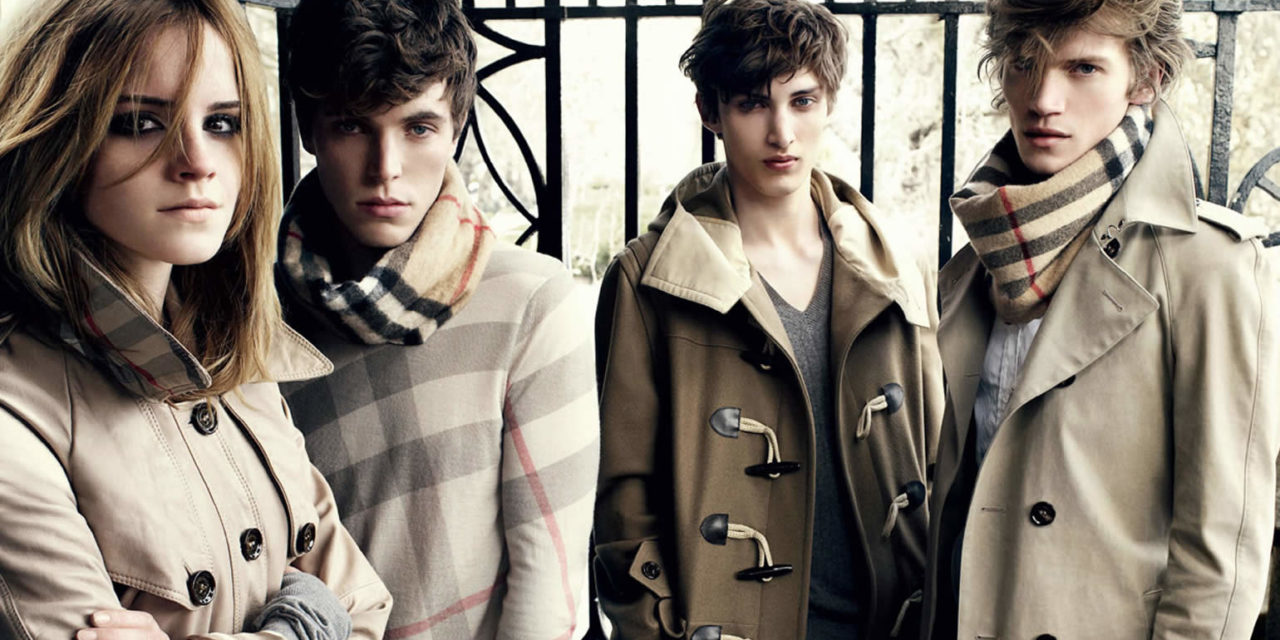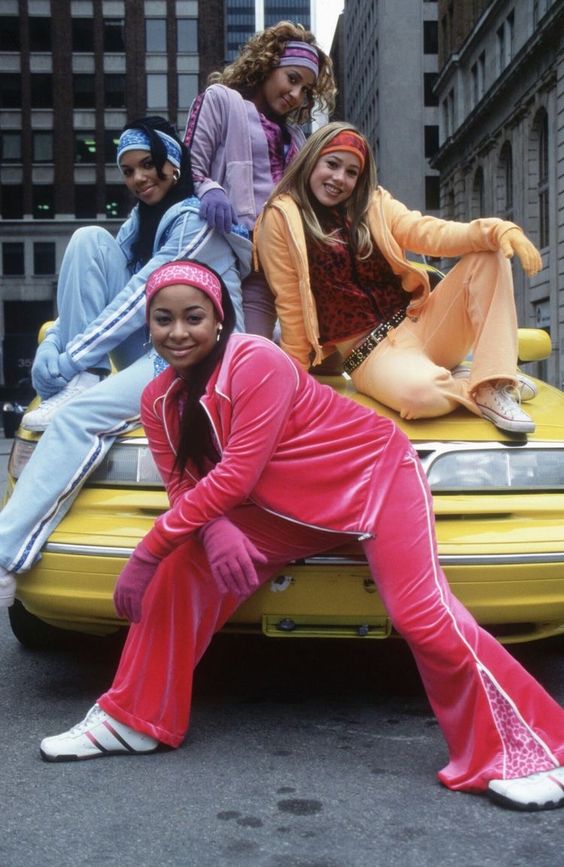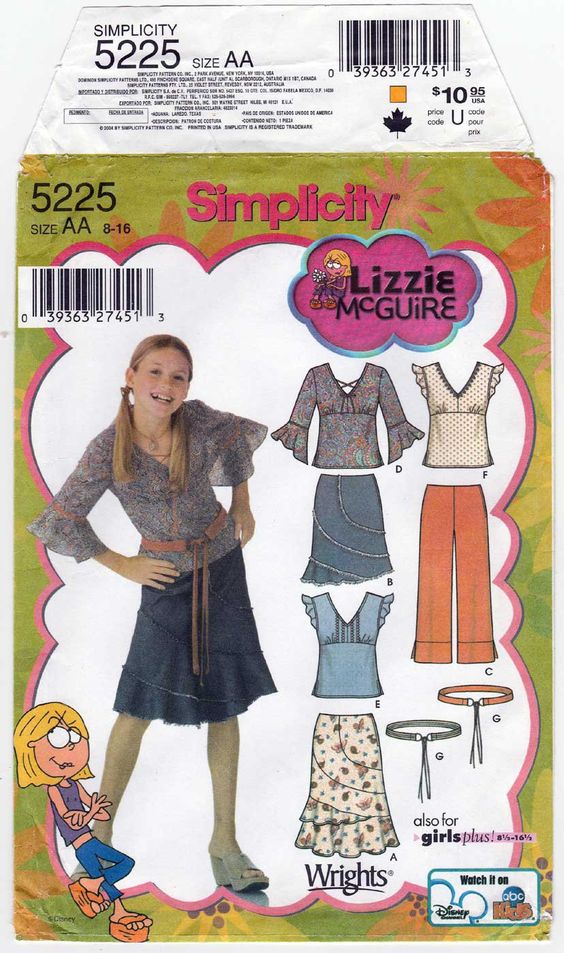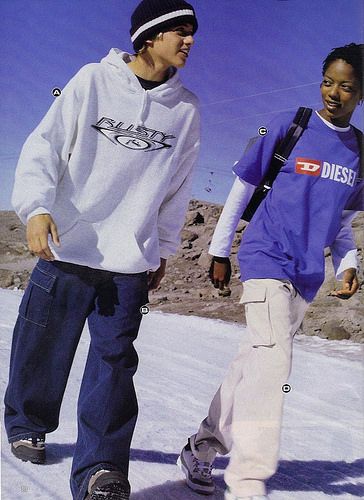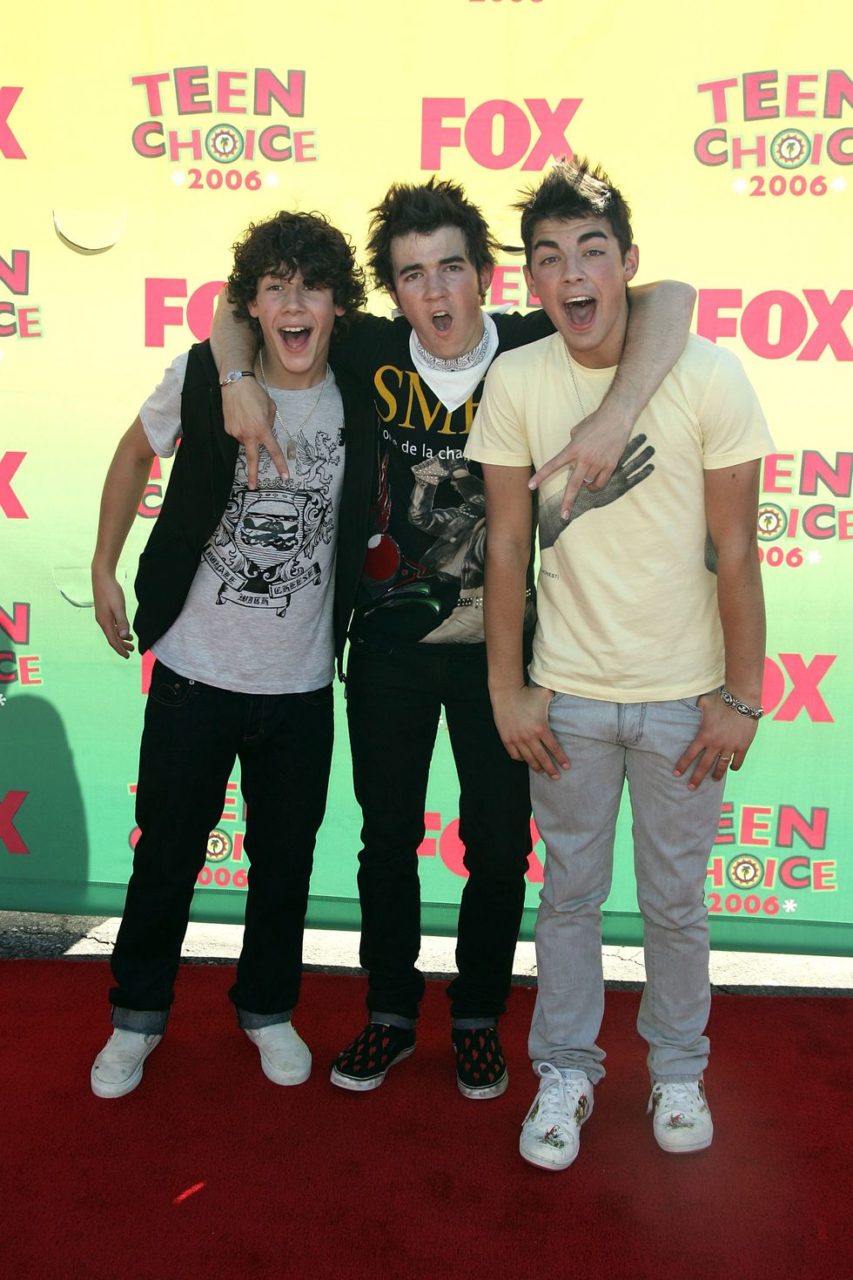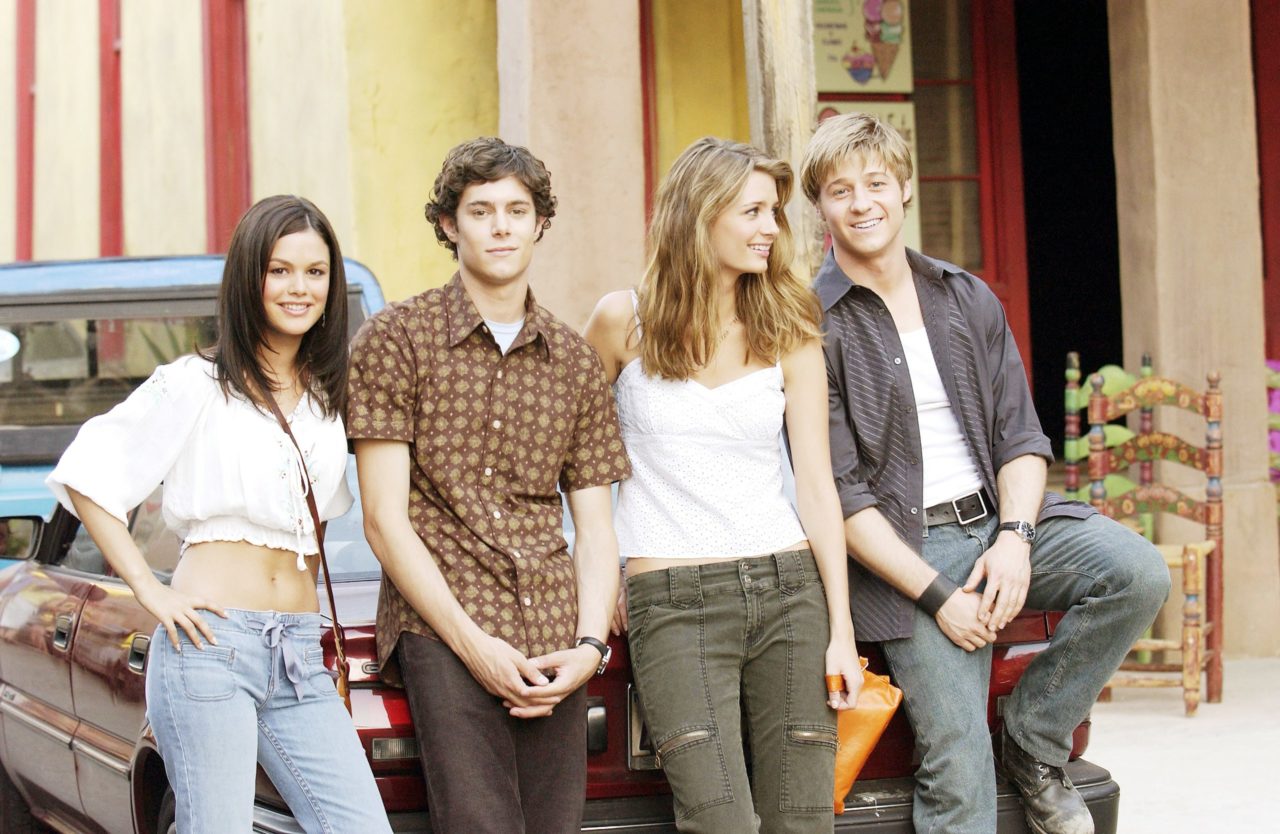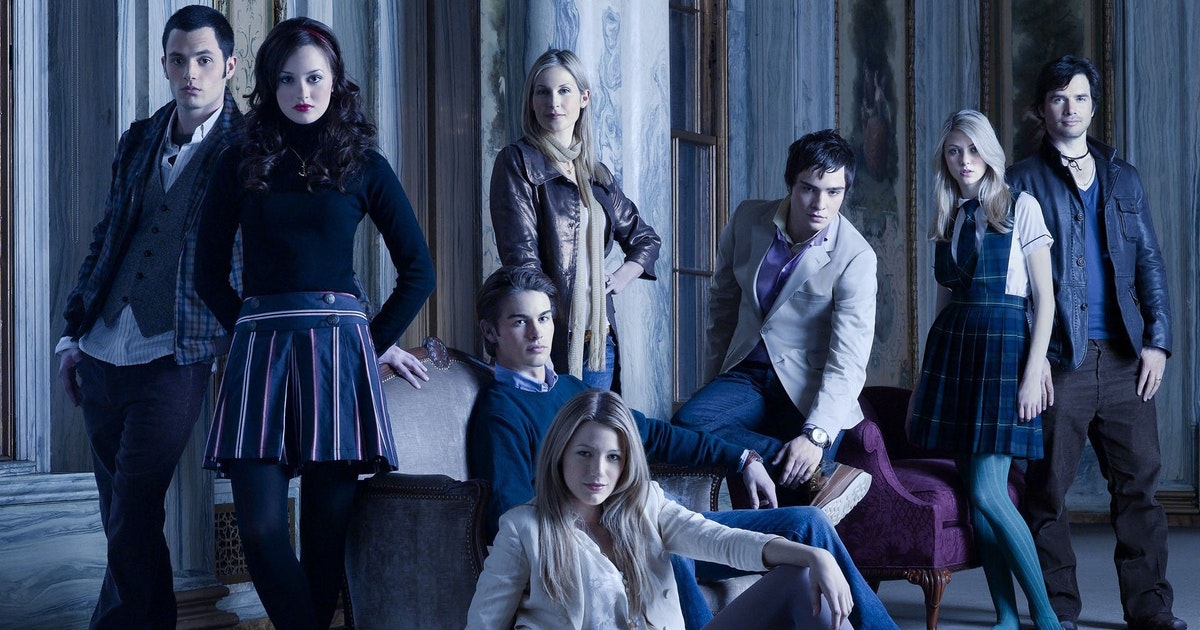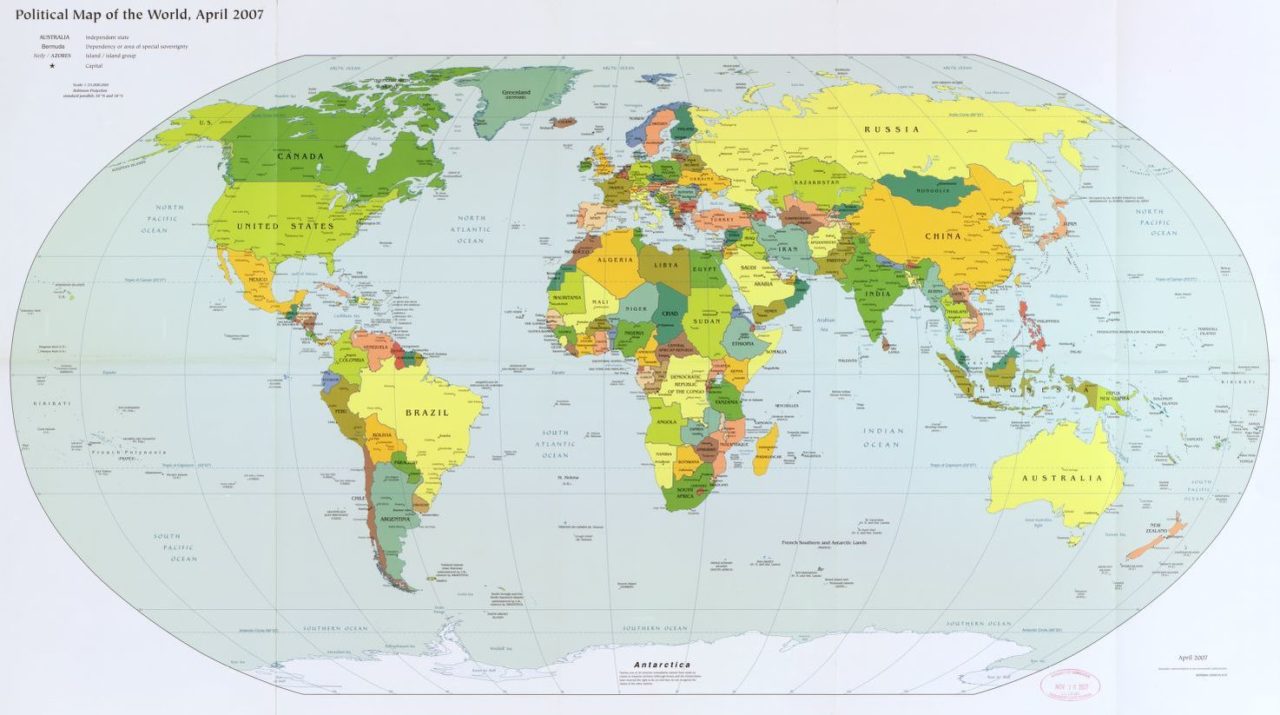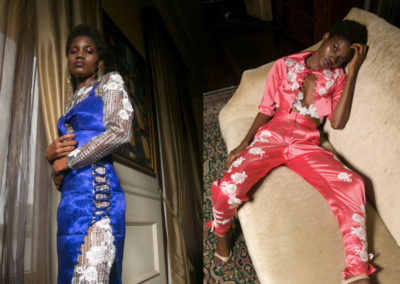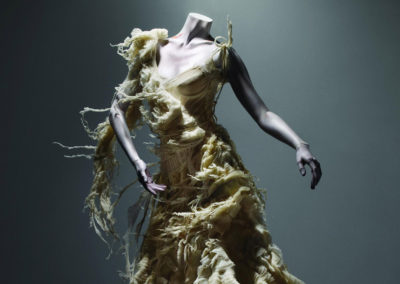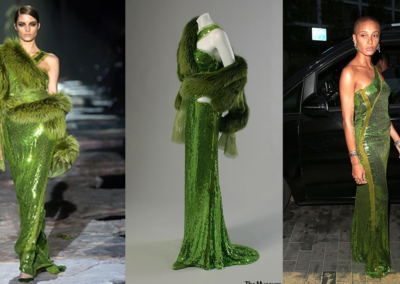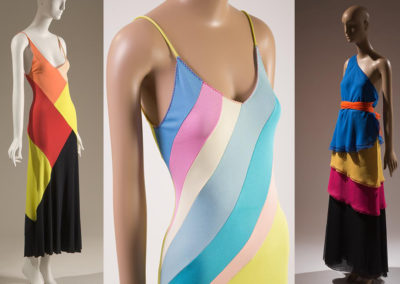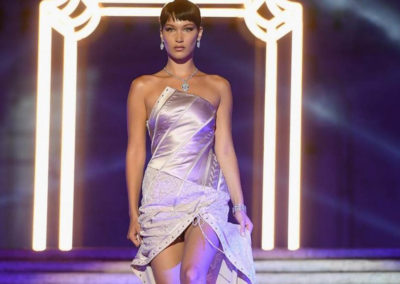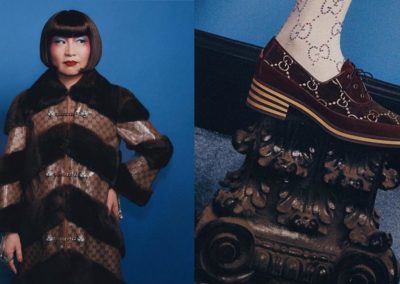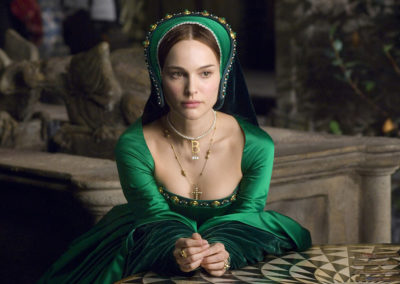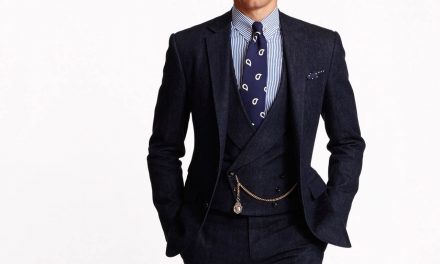OVERVIEW
As the new decade and millennium dawned, fashion largely continued along the same trajectory that had started in the late 1990s. However, in the aftermath of the September 11, 2001 attacks, fashion returned to conservatism. With the rise of new technology, fashion spread quickly and celebrities played a key role in consumer choices as images were shared through the internet instantly. While popular styles changed over the years, one item remained ubiquitous throughout the decade: denim jeans.
Womenswear
However, after the events of 9/11 and the mortgage crisis of 2001, fashion turned back towards conservatism. In America especially, this marked the rise of jeans for every occasion. This stayed true throughout the decade, however, the dominant style changed over the years. In the early 2000s, low-rise, flared jeans were prevalent while by the mid-2000s, bootcut jeans had grown more popular. During this period, True Religion and 7 for all Mankind were staple denim brands. Jeans were even worn on the red carpet with True Religion a popular option as chosen by Jessica Alba (Fig. 4). In 2005, skinny jeans were introduced and were commonplace by 2006. Distressed jeans – purposefully ripped, frayed, or otherwise worn jeans – were a hallmark of the era, and jeans were accepted as appropriate attire in nearly all situations during the decade.
Fig. 1 - Nicolas Ghesquière for Balenciaga (French, 1971-). Look 20, Fall 2001 Ready-to-Wear. JB Villareal / Shoot Digital. Source: Vogue
Fig. 2 - Tom Ford for Yves Saint Laurent Rive Gauche (American, 1961-). Look 34, Fall 2001 Ready-to-Wear. JB Villareal / Shoot Digital for STYLE.com. Source: Vogue
Fig. 3 - Calvin Klein (American, 1942-). Look 18, Fall 2001 Ready-to-Wear. JB Villareal / Shoot Digital for STYLE.com. Source: Vogue
Fig. 4 - Film Magic. Jessica Alba in True Religion Jeans, ca. 2005. Source: Stylecaster
Fig. 5 - Photographer unknown. Sienna Miller in a vintage dress at her sister's wedding, 2005. CHRIS ISON -PA IMAGES VIA GETTY IMAGES. Source: Who What Wear
Fig. 6 - Ugg. Beyonce in Ugg boots and a mini-skirt, 2004. Source: Pinterest
Fig. 7 - Roland Mouret (French, 1961-). Galaxy dress, Fall 2005 Ready-to-Wear. Source: Pinterest
In the early part of the decade, the bohemian (or boho) look took hold as a more sophisticated take on the grunge look of the nineties. While grunge emphasized the dressed-down and worn look of second-hand clothing, boho styles utilized vintage second-hand styles instead. In Fashion: The Ultimate Book of Costume and Style, Kathryn Hennessey writes (2012),
“Instead of scouring second-hand shops for well-worn oversized sweaters and army surplus gear, bohos went to expensive clothing boutiques. In Paris it was called bobo, which stood for bourgeois-bohème, implying that it was an affectation of middle-class champagne socialists.” (412)
These vintage styles were often mixed with designer and high-street pieces to complete the look. Sienna Miller epitomized this look in the early and mid-noughties (Fig. 5).
During the early to mid-part of the decade, skin was in. Tiny mini-skirts, often denim, might be worn with Ugg boots. Beyonce chose this look at a Superbowl party in 2004 (Fig. 6). Ultra-low-rise jeans were accompanied by tight, cropped shirts to show off the midriff.
In 2005, Roland Mouret debuted his Galaxy Dress (Fig. 7) which quickly became a celebrity mainstay. The dress featured a feminine silhouette with a square neckline, cinched-in waist, and under-the-knee pencil skirt. A full-length zipper down the back of the dress from top to hem increased the sex appeal and the flattering figure-hugging dress instantly became a hit and was copied on the high street.
While the Galaxy Dress was one example of an “It” item, the decade was littered with various It items that all the fashionable set had. It items from the decade include the Von Dutch trucker hats (Fig. 7), Juicy Couture velour tracksuit (Fig. 8), Ugg boots, and the baguette bag among others.
Later in the decade, handmade clothing increased in popularity. With roots in the boho-chic look of the early 2000s, the rise coincided with the financial crash of 2008. Hennessey explains,
“Mirroring the boho trend, there was a general interest in all things folksy and handcrafted. As trend-setting girls professed their love of knitting, chunky homemade sweaters became highly fashionable” (412).
Alongside this in the final years of a decade, there was a return to 1940s and 1980s structured silhouettes, nipped-in waists and shoulder pads (Laver 293). Alexander McQueen’s Spring 2008 ready-to-wear collection featured feminine forties-inspired looks (Fig. 10) while Marc Jacobs’ Spring 2009 evoked eighties party dresses (Fig. 11).
Throughout the decade, the dissemination of fashion through technology, whether from instantly sharing celebrity looks online or through e-commerce, increased instances of affordable copies. Celebrities played a massive role in consumer choices, while high street copies of designer styles were produced quickly and cheaply for the masses.
Fig. 7 - Von Dutch. Nicky Hilton in a Von Dutch trucker hat with Paris Hilton, Mid 2000s. Source: Stuff
Fig. 8 - Juicy Couture. Britney Spears in a Juicy Couture velour tracksuit, 2003. Source: InStyle
Fig. 10 - Alexander McQueen (English, 1969-2010). Look from Paris Fashion Week, Spring 2008. Source: Livingly
Fig. 11 - Marc Jacobs (American, 1963-). Look 7, Fall 2009 Ready-to-Wear. Marcio Madeira. Source: Vogue
Designers even collaborated with fast-fashion retailers to bring affordable versions of their designs to consumers. In November 2004, H&M debuted their first designer collaboration with Karl Lagerfeld (Fig. 12). The affordably-priced pieces were an instant hit and mostly sold out on the first day to the surprise of both H&M and Lagerfeld himself. At the time, H&M Marketing Director Jörgen Andersson told WWD, “We’ve been operating this business for some 60 years and we’ve never seen anything like it” (Truly Fast Fashion). The frenzy was seen across stores in the US and Europe with some stores selling out in less than 20 minutes. The success led to H&M collaborating with other high fashion designers over the years with other retailers like Target following suit.
The rise of fast fashion was aided by online retail. Amy De La Haye and Andrew Tucker write in Costume and Fashion,
“Between 2006 and 2011 online international fashion sales increased by 152%, significantly boosted by the new transactional websites of high street stores, while fashion applications on smartphones facilitate purchasing on the move.” (Laver 294)
From the technology-inspired clothing at the turn of the millennium to the sharing of trends through social media to the sale of fashion online, the story of fashion in the 2000s was linked to technology from beginning to end.
Fig. 12 - Photographer unknown. Karl Lagerfeld for H&M ad, 2004. Source: Pinterest
Fashion Icon: Paris Hilton
Fig. 1 - Photographer unknown. Paris Hilton posing at an event, 2003. Source: Vogue
Paris progressed her career with acting and writing books, but her presence on the red carpet circuit in the early to late aughts cemented her role as a fashion icon. She was seen and photographed in all of the trends throughout the decade: tracksuits, Ugg boots, bright colors, bared skin. While many of her styles were over-the-top, she also wore some of the more attainable styles like a baby doll tank top and ultra-low rise flared jeans in 2003 (Fig. 1). Paris wasn’t afraid of using the paparazzi to her advantage and much of the decade was dominated by images of her in the tabloids and she helped to popularize many of the trends seen throughout the decade.
Menswear
Like womenswear, menswear at the beginning of the 2000s looked to the future for inspiration. Futuristic styles for men included a dominance of black with some silver additions, trench coats and thin, square sunglasses (Fig. 1). However, after September 11, men’s fashion also returned to more conservative dress with sportswear the dominant style. This included tracksuits, polo shirts (sometimes layered or with the collar popped), cargo pants, and rugby shirts.
In the mid part of the decade, retro 1960s-inspired styles emerged inspired by British indie-pop bands. Smart casual was acceptable for businesswear at this point as fashion continued towards a more informal trajectory. Later in the decade, there was a 1950s and 1980s revival including leatherman jackets and slim-fit suits.
One of the defining brands of the early- to mid-2000s for both men and women was Ed Hardy. Embraced by celebrities, t-shirts emblazoned with the tattoo-inspired art and Ed Hardy logo could not be avoided. Complementing the Ed Hardy clothing were Von Dutch trucker hats which were seen on celebrities such as Justin Timberlake (Fig. 2), Ashton Kutcher, Britney Spears, and Paris Hilton, making it a must-have It item for several years in the middle part of the decade.
Fig. 3 - Photographer unknown. Jay Z at the 2001 MTV VMAs, 2001. Source: Complex
Fig. 4 - Photographer unknown. Kanye West and Pharrell, Mid-2000s. Source: Pinterest
Fig. 5 - Hedi Slimane for Dior Homme (French, 1968-). Look 1, Spring 2006. Marcio Madeira. Source: Vogue
Fig. 6 - Hedi Slimane for Dior Homme (French, 1968-). Dior Homme Spring 2006, Spring/Summer 2006. Marcio Madeira. Source: Fashion Mayann
Fig. 7 - Mario Testino (Peruvian, 1954-). Burberry Brit, 2009. Source: Pinterest
Later in the decade, two distinct music subcultures emerged influencing men’s fashion: rap-inspired gangster style and the indie-inspired scene or emo style. The gangster look involved baggie, wide-legged jeans, basketball jerseys (Fig. 3), puffer jackets and vests (Fig. 4), “stunna” shades, and Air Jordans. While inspired by Black rappers and hip-hop artists, the look was also copied by wealthy white men.
On the other end of the spectrum, the indie rock look saw the rise of skinny jeans for men, band t-shirts with blazers, black fingernails, skinny ties, and side-swept bangs covering part of the face. This was initially inspired in the early part of the decade by bands such as The Strokes and The Libertines whose style was intertwined with fashion through Dior Homme designer Hedi Slimane (Gallagher). Slimane, inspired himself by indie music, favored slim-fit trousers with blazers, skinny ties, and bedraggled hair (Fig. 5). In the middle part of the decade, this also included Hussar jackets inspired by The Libertines and worn with jeans by both men and women in Britain especially (Fig. 6). By 2007, Slimane’s stylistic preferences were being adopted by high street stores such as Zara and H&M (Gallagher).
Celebrity influence was a story throughout the decade for men and women, adults, youth, and children alike. Men emulated styles seen on musicians, TV and movie stars, and even reality stars. De La Haye and Tucker write in Costume and Fashion, “The extraordinary power of celebrities to shape consumer choices has been a notable feature of the 21st century” (296).
For some brands, this was for better or for worse. In the early part of the decade, Burberry saw its reputation fall in the UK as the iconic check became widespread amongst the working class “Chavs” (Bothwell). This peaked in 2002 when soap opera star Danniella Westbrook was seen wearing Burberry check head-to-toe. Just before this, Christopher Bailey had been brought in as creative director and he began to bring the iconic check back within Burberry’s control and by the end of the decade, the label’s clout had returned (Fig. 7).
CHILDREN’S WEAR
Fig. 1 - Photographer unknown. Lizzie McGuire, 2001. Source: Pinterest
Fig. 2 - Photographer unknown. The Cheetah Girls promotional image, 2003. Source: Pinterest
Young boys wore some of the casual styles for men. Baggy jeans, khaki pants, and cargo shorts were typically paired with graphic t-shirts or polos. In the early part of the decade, this was inspired by a West Coast skater look with skateboarding rising in popularity and inspiring boys’ fashion (Fig. 4). Long and short-sleeved button-down shirts were layered over t-shirts or sometimes polo shirts. Front-zip hoodies and sneakers were key aspects of a young boy’s wardrobe. In the later part of the decade, jeans slimmed down again and young boys could emulate the indie style for themselves as seen on the Jonas Brothers in 2006 (Fig. 5).
Fig. 3 - Simplicity. Lizzie McGuire inspired Simplicity pattern, 2005. Source: Pinterest
Fig. 4 - Photographer unknown. Early 2000s ad for boys' clothes, Early 2000s. Source: Pinterest
Fig. 5 - Photographer unknown. The Jonas Brothers, ca. 2006. Source: Harper's Bazaar
Teen fashion also saw influence from celebrities especially from the rise of teen shows such as The OC (Fig. 6) and One Tree Hill. Abercrombie and Fitch, Hollister and Co., and American Eagle were the brands to be seen in for teens in the 2000s as they supplied logoed polo shirts, popular jean styles and some of the favorite trends such as denim mini-skirts.
In 2007, teens and young adults got the high fashion treatment on the show Gossip Girl which not only featured designer fashion but often centered its plot around fashion (Fig. 7). Speaking to The Hollywood Reporter as the show came to a close in 2012, The CW’s former Entertainment Chief Dawn Ostroff noted how the show influenced consumer choices:
“People watch the show the way they read a magazine: They want to know where to get the clothes, where to get the music and where to go in New York.”
By the start of the second season in 2008, the show was influencing not only teen fashion but fashion for women in their twenties and older, as well, despite the characters portrayed on the show still being in high school. Their altered school uniforms (Fig. 8) created a trend for preppy clothing and Priorities, an eight-year-old company featuring preppy styles sold at Macy’s, Bloomingdales, and other department stores, saw sales double in the year after Gossip Girl debuted, demonstrating the power the show had on influencing trends (La Ferla).
Labels mentioned or worn on the show sold out within days of the episode premiering while girls would tear looks out of magazines and bring into stores looking for the style. Like the story of fashion as a whole in the 2000s, this was heightened by the styles being shared on the internet. Ruth La Ferla wrote of the show in The New York Times in 2008,
“Its clout as a cultural and shopping influence is amplified by the Web, including the show’s own site, which lets viewers identify the brand of the clothes and accessories in each episode and click through to buy them.”
Novel at the time, this allowed viewers to access and emulate their favorite character’s style in ways that had previously never been possible.
Fig. 6 - Photographer unknown. The OC promotional image, 2003-2005. Source: Vogue
Fig. 7 - Photographer unknown. Gossip Girl Season 1 promotional image, 2007. Source: Tunefind
Fig. 8 - Photographer unknown. Leighton Meester and Blake Lively as Blair Waldorf and Serena Van Der Woodsen in Season 2 of Gossip Girl, 2008. Source: Pinterest
References:
- “2000s in Fashion.” Wikipedia. Accessed May 28, 2021. https://en.wikipedia.org/wiki/2000s_in_fashion.
- “Balenciaga: Fall 2001 Ready-to-Wear.” Vogue, August 8, 2015. Accessed May 28, 2021. https://www.vogue.com/fashion-shows/fall-2001-ready-to-wear/balenciaga.
- Bothwell, Claire. “Burberry versus The Chavs.” BBC News, October 28, 2005. Accessed May 28, 2021. http://news.bbc.co.uk/1/hi/business/4381140.stm.
- Brillson, Leila. “From Uggs to Y2K, What the ‘00s Meant to Us.” Refinery29, February 26, 2013. Archived from the original on March 28, 2014. Access May 28, 2021. https://web.archive.org/web/20140328105310/http:/www.refinery29.com/millennial-trends.
- Bruce, Leslie and Lacey Rose. “’Gossip Girl’ Cast and Producers Reflect on the CW Drama’s 100 Episodes.” The Hollywood Reporter, January 30, 2012. Accessed May 28, 2021. https://www.hollywoodreporter.com/tv/tv-news/gossip-girl-100-episodes-leighton-meester-285716/.
- “Calvin Klein Collection: Fall 2001 Ready-to-Wear.” Vogue, February 15, 2001. Accessed May 8, 2021. https://www.vogue.com/fashion-shows/fall-2001-ready-to-wear/calvin-klein-collection.
- Campion, Freddie. “Hedi Slimane: Anthology of a Decade (2000-2010).” Vogue, February 7, 2011. Accessed June 12, 2021. https://www.vogue.com/article/hedi-slimane-anthology-of-a-decade-2000-2010.
- Dudbridge, Saxony. “2000s – 2010s.” Catwalk Yourself. Accessed May 28, 2021. http://www.catwalkyourself.com/fashion-history/2000s-2010s/.
- “Fall 2005 Ready-to-Wear.” Vogue. Accessed May 28 2021. https://www.vogue.com/fashion-shows/fall-2005-ready-to-wear.
- Fiorentino-Swinton, Alexandra. “An Ode to Disney Channel Stylists.” Moda. Accessed May 28, 2021. http://www.modachicago.org/blog/disneystylists.
- Fury, Alexander. “Roland Mouret’s Nip-and-Cinch Galaxy Dress Helped Reshape Fashion (and Victoria Beckham). Independent, October 1, 2015. Accessed May 28, 2021. https://www.independent.co.uk/life-style/fashion/features/roland-mouret-s-nip-and-cinch-galaxy-dress-helped-reshape-fashion-and-victoria-beckham-a6676166.html.
- Gallagher, Brenden. “The History of Burberry’s Check.” Grailed, December 7, 2017. Accessed June 12, 2021. https://www.grailed.com/drycleanonly/history-of-the-burberry-check.
- Gallagher, Brenden. “The Strokes, Hedi Slimane and New York Post-Punk Revival Fashion.” Grailed, December 14, 2017. Accessed June 12, 2021. https://www.grailed.com/drycleanonly/history-of-the-burberry-check https://www.grailed.com/drycleanonly/the-strokes-style-hedi-slimane.
- Hennessey, Kathryn. Fashion: The Ultimate Book of Costume and Style. London: Dorling Kindersley, 2012. http://www.worldcat.org/oclc/816318024.
- Holgate, Mark. “Spring Fashion 2000.” New York, February 14, 2000. Accessed May 28, 2021. https://nymag.com/nymetro/shopping/fashion/features/1945/.
- Idacavage, Sara. “Fashion History Lesson: The Origins of Fast Fashion.” Fashionista, October 17, 2018. Accessed May 28, 2021. https://fashionista.com/2016/06/what-is-fast-fashion.
- McDermott, Kerry. “Paris Hilton’s Most Outrageously Noughties Looks, Ranked.” Vogue, August 28, 2020. Accessed June 13, 2021. https://www.vogue.co.uk/fashion/gallery/paris-hilton-outfits.
- La Ferla, Ruth. “Forget Gossip, Girl; the Buzz is About the Clothes.” The New York Times, July 8, 2008. Accessed May 28, 2021. https://www.nytimes.com/2008/07/08/fashion/08gossip.html.
- “Lanvin: Fall 2001 Ready-to-Wear.” Vogue, March 10, 2001. Accessed May 28, 2021. https://www.vogue.com/fashion-shows/fall-2001-ready-to-wear/lanvin.
- Laver, James, Amy De La Haye and Andrew Tucker. Costume and Fashion: A Concise History. 5th ed. New York: Thames & Hudson, 2012. http://www.worldcat.org/oclc/966352776.
- Okwodu, Janelle. “Paris Hilton Remains the Ultimate Aughts Muse.” Vogue, Febuary 17, 2001. Accessed June 13, 2021. https://www.vogue.com/slideshow/paris-hilton-style-evolution-aughts-muse.
- “Paris Hilton.” Wikipedia. Accessed June 13, 2021. https://en.wikipedia.org/wiki/Paris_Hilton.
- Pires, Kevin. “Ed Hardy Invented 21st Century Fashion & Everyone Else is Playing Catch Up.” Highsnobiety. Accessed May 28, 2021. https://www.highsnobiety.com/p/ed-hardy-legacy/.
- “Roland Mouret: Fall 2005 Ready-to-Wear.” Vogue, February 7, 2005. Accessed May 28, 2021. https://www.vogue.com/fashion-shows/fall-2005-ready-to-wear/roland-mouret.
- “Quick Guide to 2000s Fashion.” CentralCasting, January 14, 2019. Accessed May 28, 2021. https://www.centralcasting.com/quick-guide-2000s-fashion/.
- “Saint Laurent: Fall 2001 Ready-to-Wear.” Vogue, March 13, 2001. Accessed May 28, 2021. https://www.vogue.com/fashion-shows/fall-2001-ready-to-wear/saint-laurent.
- “Spring 2005 Ready-to-Wear.” Vogue. Accessed May 28, 2021. https://www.vogue.com/fashion-shows/spring-2005-ready-to-wear.
- WWD Staff. “Truly Fast Fashion: H&M’s Lagerfeld Line Sells Out in Hours.” WWD, November 14, 2005. Accessed May 28, 2021. https://wwd.com/fashion-news/fashion-features/truly-fast-fashion-h-m-8217-s-lagerfeld-line-sells-out-in-hours-593089/.
Historical Context
Wikipedia: 2000-2009
Political map of the world, April 2007. Source: Library of Congress
Events:
- 2003 – The first season of reality contest America’s Next Top Model premieres on US television.
- 2004 – The group Designers Against Aids is launched to promote awareness of the disease. Designer Marc Jacobs and clothes store H&M go on to collaborate with the charity.
- 2005 – The Istanbul Cevahir Shopping Centre opens. It is the largest mall in Europe, and the sixth largest in the world.
- 2008 – First Lady Michelle Obama wears a dress by Jason Wu at the inaugural ball for President Barack Obama.
Timeline Entries
Primary/Period Sources
Resources for Fashion History Research
To discover primary/period sources, explore the categories below.
Have a primary source to suggest? Or a newly digitized periodical/book to announce? Contact us!

